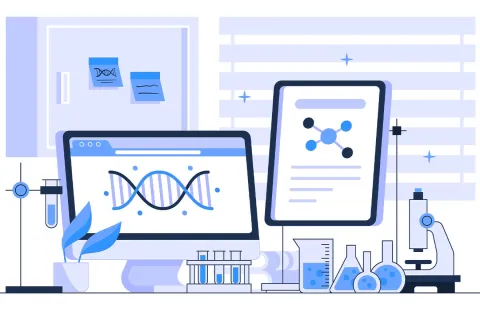
A comprehensive compilation of clinical and nonclinical data on the investigational product (drug, supplement, device, or other product) provides a brief description of the drug substance and the formulation, including the structural formula (if known). An Investigator’s Brochure (IB) is an essential document maintained by a drug developer or investigator throughout the drug development process, and it contains the body of information acquired before and throughout a drug trial. The IB is updated whenever new information about an investigational product becomes available.
Purpose of the IB
The IB's goal is to combine preclinical and clinical data to furnish the investigator with the background information needed to manage study conduct and study subjects during a clinical trial. It ensures that the investigator and other staff involved in the trial process understand the rationale of the study and work in accordance with the study protocol. It gives clinicians or potential investigators information which is concise, basic, objective, balanced, and non-promotional, and this is needed for the proper conduct of the study, such as dosages, dosing frequency, administration techniques, etc. It also supports the clinical management of study participants during the trial, such as safety monitoring measures. The IB helps the investigator to evaluate the appropriateness of a trial in an unbiased and independent manner so that the investigator can make an unbiased risk-benefit assessment.
General Information that an IB should Include
The IB must include the following for each investigational medicinal product:
- Information about the sponsor's name and the product's identification (research number, generic and trade names)
- A confidentiality statement instructing the investigator's team, review boards, and ethical committees to consider the document confidential
- A collection of results from non-clinical and clinical investigations on the investigational medicinal product
- Background information about the investigational medicinal product's properties and history
Contents of the IB
Section 7 of ICH E6 gives information on what should be included in a table of content that is almost always used in its entirety. The highest-level sections are as follows:
- Table of contents
- Summary
- Introduction
- Physical, chemical, and pharmaceutical properties and formulation
- Non-clinical studies
- Effects on humans
- Summary of data and guidance for the investigators
Updating the IB
The editing of the IB should be overseen by a medically certified practitioner. An IB should be evaluated once a year and amended as needed in accordance with the written requirements of the sponsor. If new material is significant enough, it must be communicated to the investigators and the Human Research Ethics Committee (HREC) before it is included in the updated IB. The sponsor guarantees that the investigators have access to an up-to-date IB while the investigators are responsible for presenting an updated copy of the IB to the necessary Institutional Review Boards (IRBs) and Independent Ethics Committees (IECs).
An IB update is never "simply" an IB update. Depending on the circumstances, you may be obligated to provide a detailed overview of the IB changes. This detailed overview is known as a "summary of change document," or simply SOC, and it uses strikethrough and bold font to illustrate the changes done. A thorough SOC should not be mistaken for the summary of changes which is frequently seen at the beginning of an IB and provides a high-level overview of the changes made. The method of developing a thorough SOC varies for each firm.
Challenges for the Medical Writers
When preparing an IB, the overarching issue is to produce a clear and focused presenting style while striking an acceptable balance between completeness and readability. Of course, the IB should be both comprehensive and readable in the end, but this takes time and effort. As a result, given the limited time, an IB may grow bloated with information in order to appear thorough, but the result is frequently unreadable. To ensure conciseness, the contents of the entire IB should be evaluated at each update and not just in terms of what should be included but also in terms of how much of the present information can be reduced or eliminated. Logically, the initial edition will focus on non-clinical material with no clinical information. Simultaneously, when more clinical information becomes available, the quantity of detail for non-clinical information may be reduced as the clinical performance of the investigational product is better known. So, preparing a quality IB that balances the necessary nonclinical and clinical information which facilitates the proper conduct of the trial is challenging.
The IB is a live document that must be updated on a regular basis, providing writers with an exciting opportunity to connect with a broad team drawn from a variety of tasks contributing to the development of the investigational product. This variety can exacerbate the logistical issues associated with getting the materials required to prepare the IB. Depending on the IB preparation process, the writer may be involved in coordinating and modifying text contributions received from other team members or may be expected to create some or all the IB content based on reports and other material received as source information. Regardless of the process, the main challenge and responsibility for preparing an IB are to confirm that the information captured in the IB is as concise, complete, readable, and focused as possible and is correctly structured to efficiently communicate what an investigator needs to know for the proper conduct of the study and for assessing the benefits and risks of using the investigational product. Hence, a partnership with a Regulatory service provider with an efficient pool of medical writers who have a thorough understanding of the clinical development process compliant with ICH guidelines and who can timely deliver a high-quality submission-ready, right-first-time IB with a satisfactory response from the client is important. Consult Freyr for compliance best practices.









